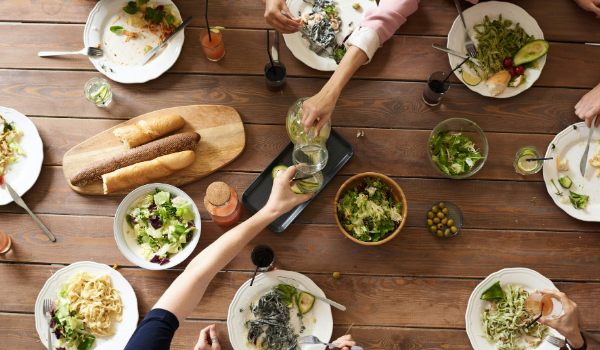Customisation is better for the planet. The portion sizes served at restaurants are often larger than they need to be, and while food outlets are getting better at encouraging diners to take away leftovers it’s still not quite standard practice. UK restaurants throw out more than 600,000 tonnes of food every year and one third of come straight from customers plates. When that food arrives in landfill it can decompose without oxygen and create methane – a greenhouse gas 30 times more potent than carbon dioxide.
So those scraps can have a huge and dangerous impact. One of the great benefits of meal customisation is having the ability to design each dish down to the gram. By giving customers the autonomy to order only as much as they need, it helps vastly reduce the amount of food waste from any given restaurant or food outlet.
You can be sure its fresh
No way can a meal be stood in the back if the customer designs what they want on the spot. Meals ordered with Vita Mojo OS are built by the customer from scratch, and so naturally the same process must go on in the kitchen. Quick service restaurants that offer meal customisation to the level that Vita Mojo Operating System (VMOS) can facilitate sees food quality rise on average. Further, fresh preparation not only improves the quality of each meal but the satisfaction of the customer too.
You know exactly what’s in it
Eating out can be a real challenge for those trying to watch their calorie intake. It can be impossible at many restaurants to estimate how many calories are in a meal, particularly if you can’t be sure how it was cooked or exactly what ingredients were used. For example, foods cooked in oil will have tend to have many more calories than the food if it was grilled or steamed.
In this case, the benefit of meal customisation is knowing exactly what’s gone into it. There’s no danger of hindering that exciting progress being made towards a healthier lifestyle and you can feel more confident (and not guilty) about the food choices you make outside of the house. As the saying goes – knowledge is power!
You can tailor it to your DNA
Did you know you could customise your meals according to your DNA? There’s no one-size-fits-all when it comes to nutrition but your genetic makeup has an influence on what diet is best for you. Vita Mojo is partnered with DNAFit who offer tests to reveal the unique nutrogenic profile of individual customers. Vita Mojo OS allows these results to be linked to customer accounts and integrates it into the UX where foods that are more beneficial to them are highlighted. These nudges are great for customers trying to make better food choices or if they are aiming to stick to a diet which will benefit them most.
To read more about what role VMOS plays when it comes to the benefits of meal customisation you can read our other case study with WOKIT. Otherwise, how about we take you back and show you how this all started with the Vita Mojo philosophy.
Empower your customers to make the right choices for their nutritional needs
From 6th April 2022, all cafes, restaurants and takeaways run by companies with more than 250 employees are required to include calorie labelling and counts on their menus. The new calorie labelling law is part of a wider government strategy to tackle obesity and promote healthy eating.
Back in 2015 when we opened the first totally digital and cashless QSRs in the UK, our aim was to put nutrition information at the heart of the concept. We built technology that allowed customers to fully customise their meals based on their preferences, goals or health. However indulgent, calorie counts were clearly displayed at the point of sale for every item.
We learnt that informing customers didn’t reduce demand. In fact, one of the highest calorie dishes – beef short rib with buttery sweet potato mash – sold just as well as the low-calorie menu items. Rather than avoid the calorific dishes, we heard from customers that it simply helped them to make more informed decisions outside of the restaurant. For example, they might consider a lighter lunch ahead of a big dinner or a lighter breakfast the next day.
By making information readily available, it empowered customers to build the right meal and we saw loyalty and satisfaction increase as a result.
